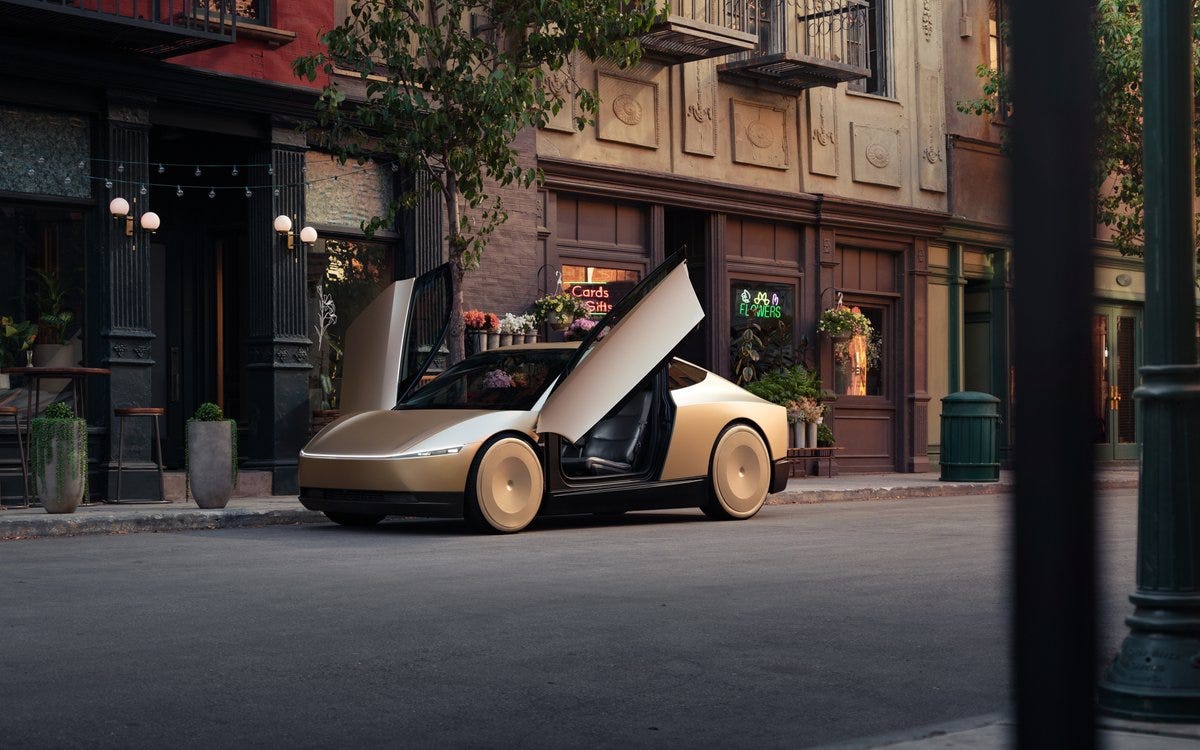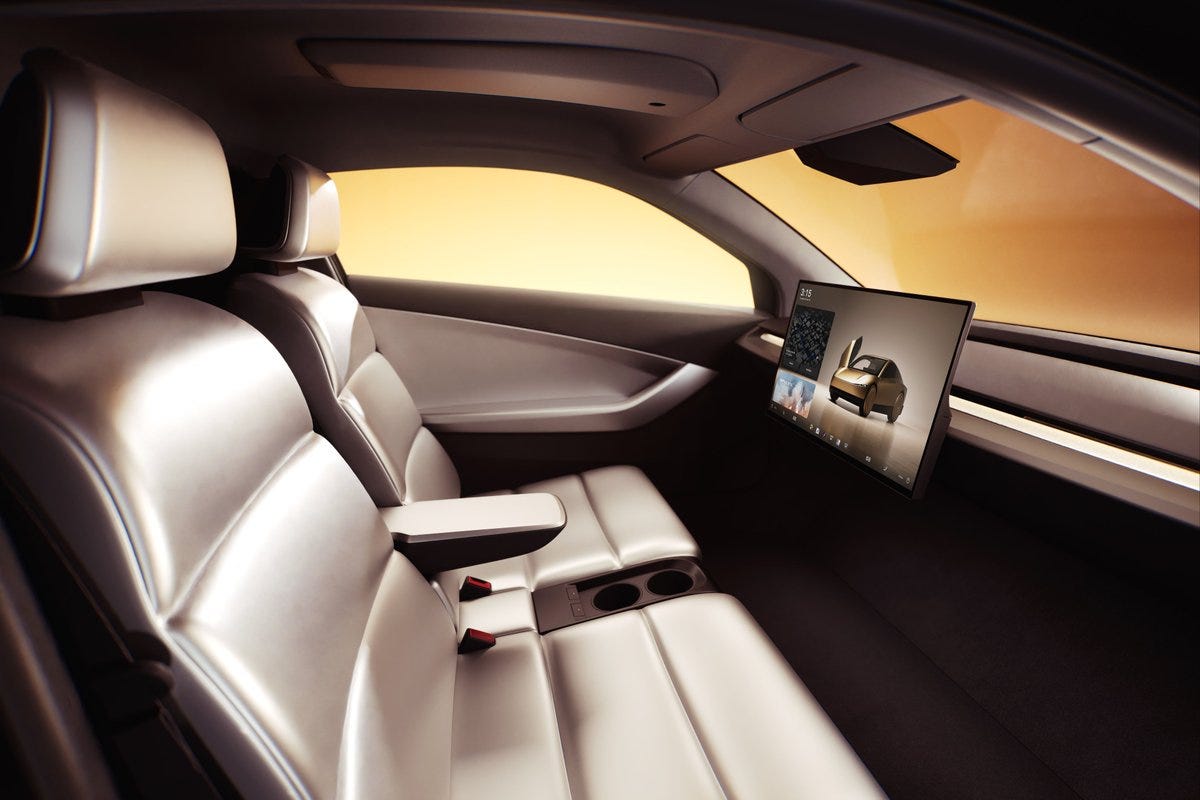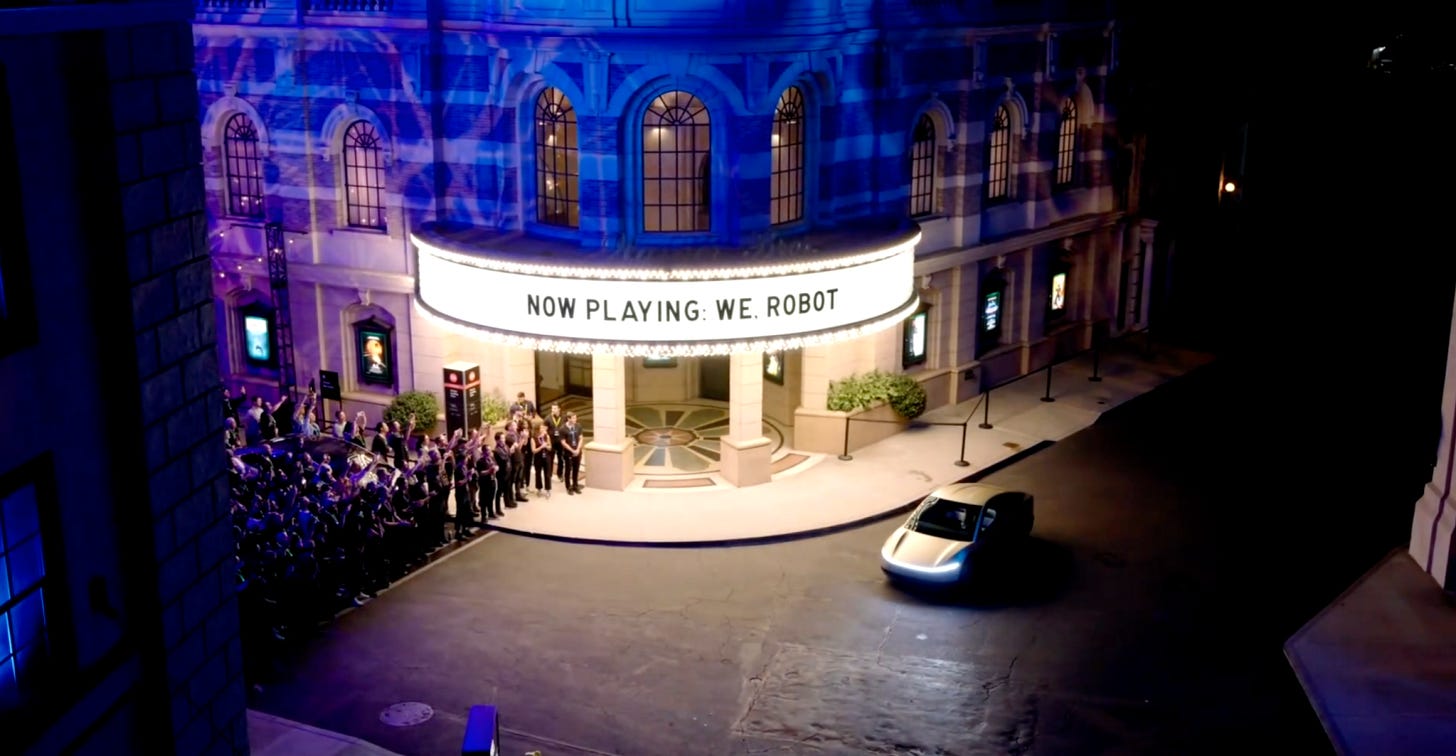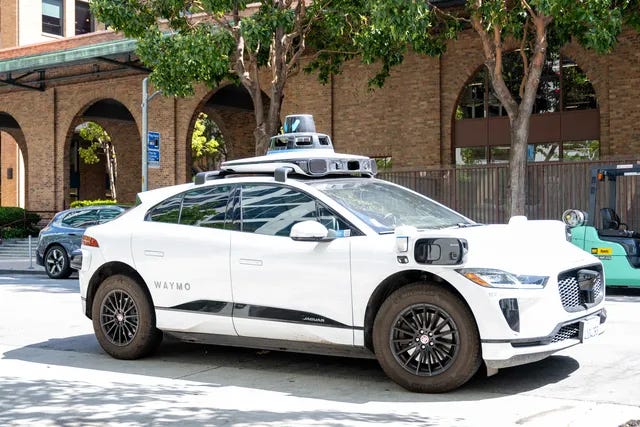Elon Musk Unveils Tesla's Futuristic Fully Autonomous Driverless "Cybercab"
A Glimpse into the Future of Driverless and Autonomous Transportation Amidst Competition from Google's Waymo.
Unveiling of the Cybercab: The Future is Here
On the evening of October 10, 2024, at the "We, Robot" event held at Warner Bros. Studios in Burbank, California, Elon Musk, CEO of Tesla, made the highly anticipated revelation of the Cybercab. Touted as the future of urban transportation, the Cybercab is Tesla's first purpose-built robotaxi, designed to offer fully autonomous driving capabilities. Despite being delayed by over an hour due to a medical emergency in the hall, the event marked a pivotal moment in Tesla’s ambitious journey to revolutionise both personal and public transportation.
The Cybercab, with its sleek, futuristic appearance and bold technological advancements, represents a significant milestone in Tesla’s long-term vision of providing affordable, autonomous transport solutions. Musk himself walked alongside a Cybercab prototype, demonstrating the vehicle’s impressive features, before announcing Tesla’s plans to commence production by 2026 or 2027. For many, this announcement felt like a long-awaited leap forward into a world of personalised, driverless transport.
A Look at the Cybercab’s Key Features
Tesla’s Cybercab is designed to be a level 5 autonomous vehicle, meaning it can operate without human intervention in all driving conditions. The vehicle has no steering wheel or pedals, a clear indicator of its full commitment to autonomy. Key features include:
Butterfly-wing doors that open upwards, adding to its futuristic aesthetic.
A compact cabin designed to accommodate two passengers, making it ideal for short, urban trips.
Tesla’s Full Self-Driving (FSD) system, which relies solely on cameras to navigate its environment.
Inductive charging technology, allowing for wireless recharging, ensuring convenience and efficiency for future fleets.
Musk’s goal is to price the Cybercab below $30,000, positioning it as a cost-effective alternative to mass transit, with projected operating costs as low as $0.20 per mile. This affordable price point could make Tesla’s Cybercab accessible to a wider audience and potentially disrupt traditional taxi services and public transport systems globally.
Even before the launch, philosopher-entrepreneur Naval Ravikant tweeted, “Robotaxis are going to get shockingly cheap, especially during off hours.” With the lower-than-expected price tag now announced, his prediction seems even more relevant.
Our Honorary Tech Adviser, Bilawal Sidhu, based in Austin, Texas, where Google's Waymo waitlisted robotaxi service is already in operation, shared his thoughts exclusively with "The KBS Chronicle" after watching Tesla's livestream. He remarked, "This is one more reason for me not to buy a car, even though I live in the suburbs of the city."
The Competitive Landscape: Tesla vs. Waymo
Tesla’s entry into the autonomous robotaxi market places it in direct competition with Waymo, a subsidiary of Alphabet (Google’s parent company), which has already made significant strides in this field. Waymo, a leader in autonomous vehicle technology, operates in major U.S. cities such as San Francisco, Phoenix, and Los Angeles, where it has completed over 100,000 paid trips per week and over 2 million trips in total.
There are notable differences in approach between the two companies:
While Tesla relies solely on a camera-based system, Waymo employs a more comprehensive suite of sensors, including lidar, radar, and cameras, which provides a potential edge in handling complex and diverse driving conditions.
Waymo’s vehicles are already operating successfully on public roads, with plans to expand its fleet through a partnership with Hyundai, introducing self-driving IONIQ 5 taxis by 2026.
Given Waymo’s established presence and proven track record, Tesla’s Cybercab faces a steep challenge. Waymo’s years of experience, coupled with its technological advancements, make it a formidable competitor. Nevertheless, Tesla’s aggressive pricing and potential mass production of Cybercabs could give it a unique advantage if it can successfully scale its autonomous fleet.
Beyond the Cybercab: Robovans and Robots
In addition to unveiling the Cybercab, Elon Musk surprised attendees by revealing a lineup of 20 fully autonomous robotaxis, which he demonstrated with a brief test drive through the streets of Warner Bros. Studios. Musk reiterated his belief that autonomous transport could become so cost-effective that it may resemble “individualised mass transit,” with the Cybercab operating at an average cost of $0.20 per mile. He also confirmed plans for Tesla to launch unsupervised Full Self-Driving (FSD) in Texas and California by 2025 for the Model 3 and Model Y.
Moreover, Musk expanded the vision by introducing the Robovan, a larger autonomous vehicle capable of carrying up to 20 people, and the Optimus humanoid robots, priced between $20,000 and $30,000. These robots performed various tasks, from mixing drinks to interacting with event guests, showcasing Musk’s broader ambitions in AI and robotics.
Tesla’s ongoing push for autonomy is rooted in Musk’s long-term goal of running a fleet of dedicated robotaxis, allowing Tesla owners to monetise their cars when not in use. Despite this grand vision, challenges remain, particularly in achieving full autonomy with its camera-based FSD system and meeting federal safety regulations for vehicles without steering wheels or pedals.
Hardware Challenges for Tesla's Full Self-Driving Vision
One of the key challenges Tesla faces in realising its fully autonomous vision lies in the current hardware limitations of its vehicles. Elon Musk revealed in a July post on X that the next generation of Tesla's AI will require a significant increase in parameter count—about fivefold—which cannot be achieved without upgrading the vehicle’s inference computer. This suggests that the existing Tesla fleet may not be equipped to handle the full self-driving capabilities that Musk has been promising. To successfully commercialise Level 4 autonomous driving, where a vehicle can operate without human intervention under specific conditions, Tesla must address these hardware constraints to ensure that its vehicles are capable of truly independent driving.
Regulatory and Safety Barriers
Tesla also faces significant regulatory hurdles in bringing autonomous vehicles like the Cybercab to market, particularly due to its unique design, which lacks steering wheels and pedals. This non-compliance with current U.S. federal vehicle safety laws poses a legal challenge. Tesla will need to gain exemptions or regulatory approval to move forward with its plans, much like GM’s Cruise, which encountered similar obstacles with its robotaxi, the Origin. Additionally, Tesla must prove the safety and reliability of its autonomous systems, especially given past investigations into crashes involving its Autopilot feature. Public trust and regulatory acceptance are crucial for Tesla to succeed in making autonomous vehicles a mainstream reality, and overcoming these barriers will be essential as it pushes towards a fully autonomous future.
Tesla’s Challenges in Entering the Indian Market
Despite its global ambitions, Tesla has faced significant roadblocks in setting up a manufacturing facility in India. Elon Musk has expressed disappointment, if not frustration, stating that he is unwilling to manufacture vehicles in a country where Tesla’s autonomous cars cannot legally operate due to outdated motor vehicle laws. Indian manufacturing regulations require a high level of indigenisation, insisting that the majority of components be manufactured locally, rather than allowing the mere assembly of Completely Knocked Down (CKD) kits under the guise of local manufacturing. Additionally, India demands export obligations, a commitment Musk is hesitant to make. Moreover, with the sensitive issue of driver unemployment in India, the prospect of introducing Tesla’s futuristic driverless vehicles is likely to meet with strong resistance. Given these challenges, it seems unlikely that Tesla’s autonomous driverless cars will be seen on Indian roads anytime soon.
Cautious Optimism for the Future
Despite the challenges, there is cautious optimism about the future of autonomous transportation. Musk’s vision of a world where robotaxis like the Cybercab offer a cost-effective and convenient alternative to traditional transport systems is tantalising. Should Tesla succeed in scaling up production and ensuring the safety and reliability of its autonomous vehicles, the Cybercab could become a ubiquitous part of urban landscapes in the USA and Europe by the late 2020s.
At the same time, competition from companies like Waymo and regulatory hurdles will require Tesla to not only innovate but also navigate a complex landscape of legal and public scrutiny. For now, the Cybercab represents a bold step towards that future, but much work remains before this vision becomes a widespread reality.
The race for autonomous dominance is far from over, and while the Cybercab represents the latest exciting development, the next few years will determine whether Tesla or one of its rivals can truly revolutionise the way we move1.
All images courtesy Tesla Inc.









